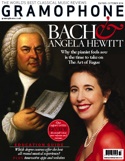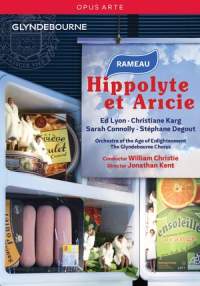Texte paru dans: / Appeared in:
*

GRAMOPHONE (10/2014)
Pour s'abonner /
Subscription information
Opus Arte
OA1143D

Code-barres / Barcode : 0809478011439
Consultez toutes les évaluations recensées pour ce cd
~~~~ Reach all the evaluations located for this CD
Reviewer:
Richard Lawrence
Rameau was already 50 years old when Hippolyte et Aricie, his first opera, was staged in Paris in October 1733. Simon-Joseph Pellegrin based his libretto on Phèdre, the tragedy by Racine, but out of respect for the master he chose another title. However, the interesting characters are not the young lovers but Phaedra and her husband Theseus: the former for her guilty love for her stepson Hippolytus and her remorse at his reported death; the latter for his courage, his credulity and, too, his remorse.
The Prologue begins with nymphs
paying tribute to Diana, the virgin goddess. Diana is dismissive of a challenge
by Cupid but forced to concede victory when Jupiter intervenes. Greatly put out,
she rather improbably vows to help the lovers, Hippolytus and Aricia. Jonathan
Kent and the designer, Paul Brown, set the Prologue in – and in front of – an
enormous open refrigerator. My heart sank when I read about this but actually
the fridge is an appropriate 21st-century metaphor for the frigidity of the
goddess, who sings from the ice-making compartment.
Diana does indeed intervene in the opera: in the first act, to rescue Aricia
from perpetual virginity in her service, and at the end, to bring the lovers
together in marriage. After the shock of the Prologue, the other sets are only
slightly less eyecatching: Diana’s temple is a pillared hall, two dead stags
suspended from the ceiling; the action in Act 3 is spread among splitlevel
compartments, Phaedra’s crucial encounter with Hippolytus taking place in a
sitting-room. The costumes range from exotic Baroque to modern dress. There is
much spectacle, of course, and one of the many good things about the production
is the way Jonathan Kent and choreographer Ashley Page have integrated the
dancing with the action. One reservation, though: postmodern irony is all very
well, but the hauling away, thigh-slapping matelots are straight out of an
am-dram HMS Pinafore.
Ed Lyon and Christiane Karg make touchingly innocent lovers, Stéphane Degout is convincingly anguished as Theseus, and Sarah Connolly formidably regal as well as despairing. The version used is not quite that of 1733, as stated – the lovers’ first duet comes from the 1742 revision, for instance – but no matter. There are irritating inaccuracies in the subtitles. This is at least the third production that William Christie has conducted and his enthusiasm inspires orchestra, chorus and all. If you enjoyed his and Kent’s The Fairy Queen, you will enjoy this.
Cliquez l'un ou l'autre
bouton pour découvrir bien d'autres critiques de CD
Click either button for many other reviews


